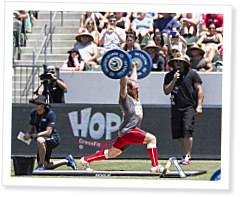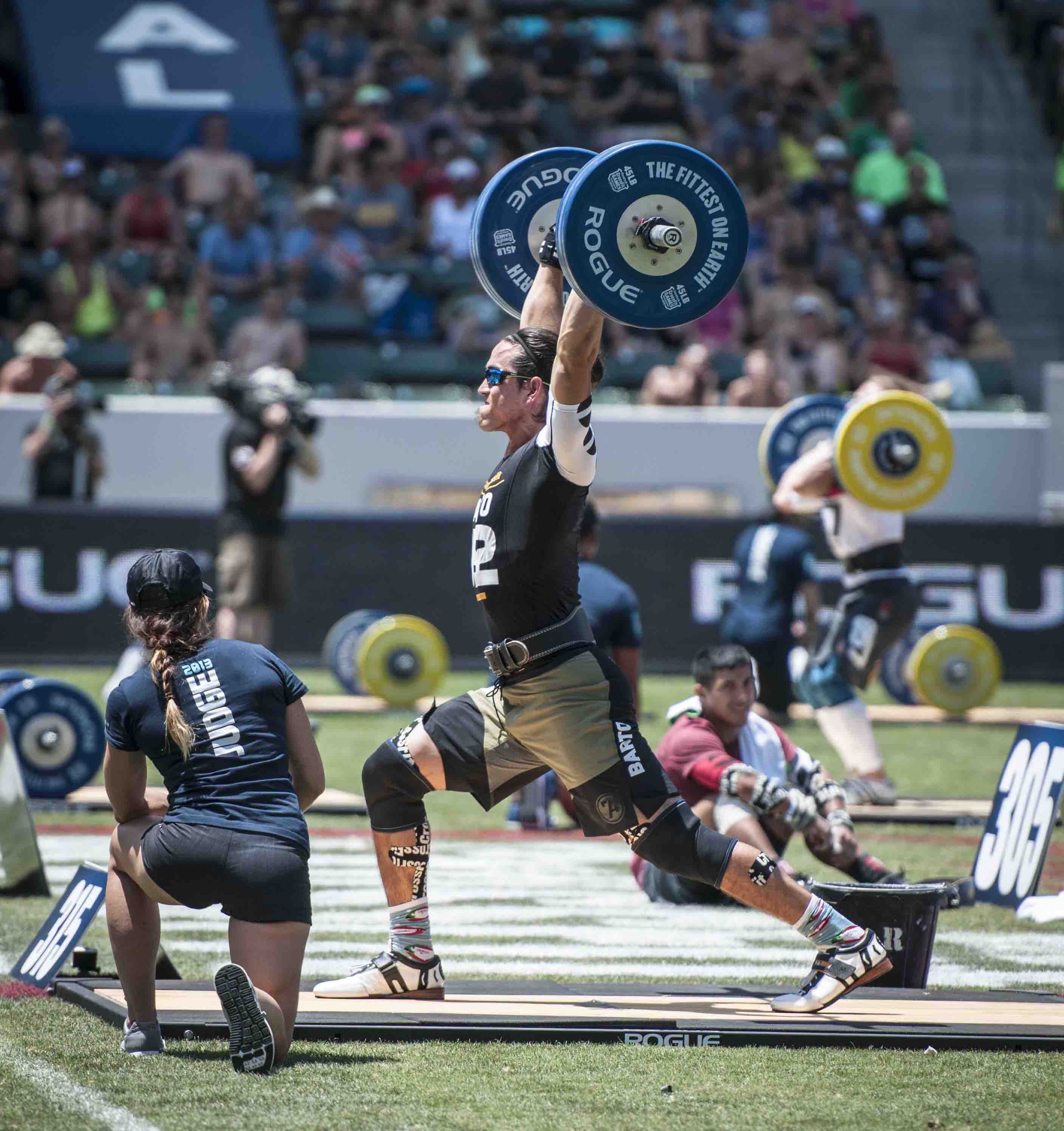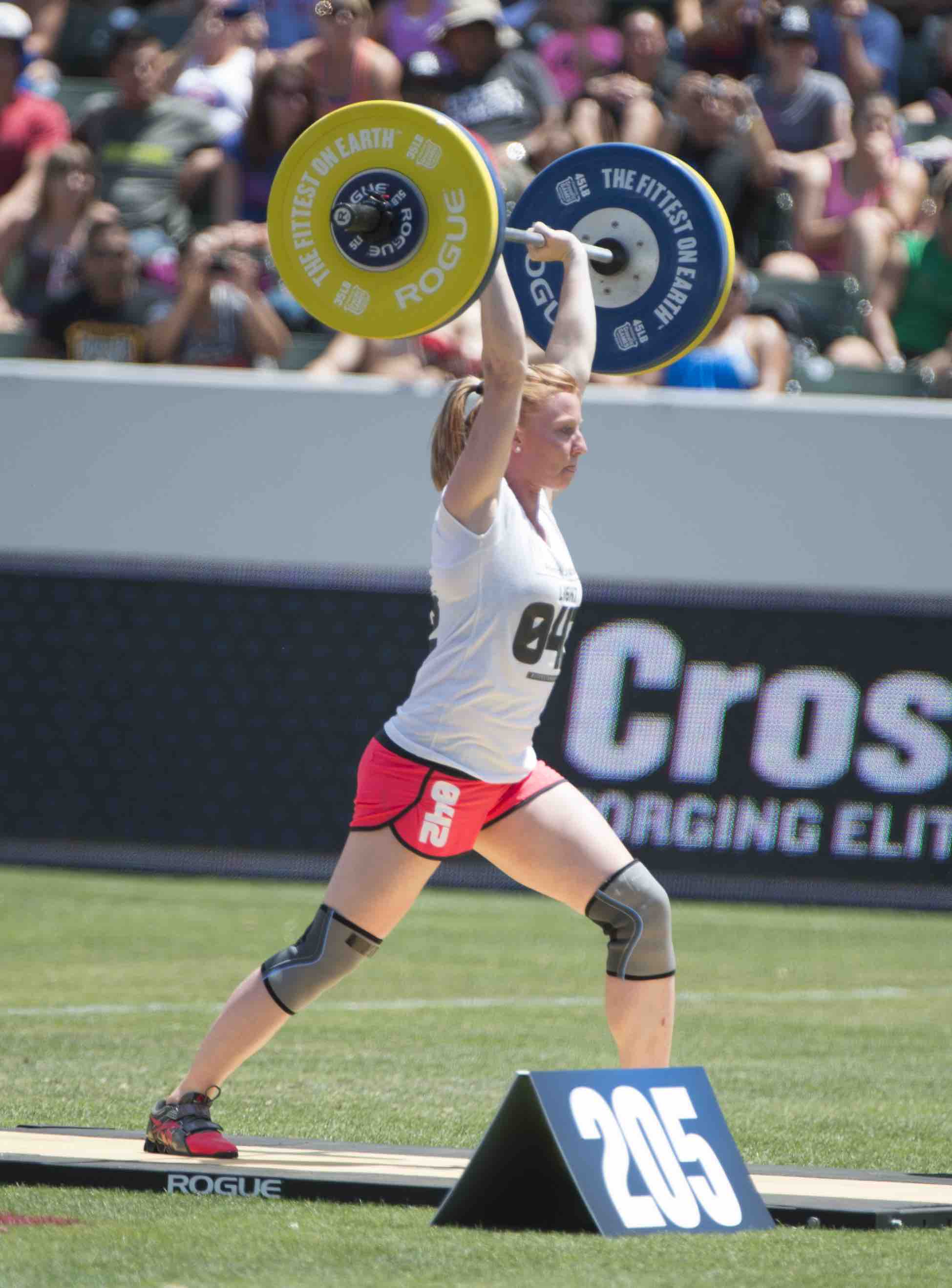
Mike Burgener offers quick tips to correct footwork in the jerk.
The jerk really comes down to a fraction of a second.
Time it perfectly and the bar seems to stall in the air while a lightning-fast athlete wedges himself between the steel and the ground with perfect balance. The lift looks easy and natural, full of agility and grace. It’s like watching a gymnast stick the landing.
Miss the correct moment by a fraction of a second and the lift looks sluggish and ugly. It even sounds wrong, with the crisp report of a solid, confident jerk replaced by odd skidding sounds, staggered steps and the awkward crashing bumper plates.
“It’s such a meticulous lift. And the beauty of it is that you win weightlifting contests and heavy-duty contests, you win with the clean and jerk. You don’t win with the snatch,” said Mike Burgener of CrossFit Weightlifting.
He continued: “They should always be able to jerk what they clean. A lot of times you’ll see that a guy will have a humongous clean, but they’ll have a shitty jerk. If you can clean 400 lb., you’ve got to be able to jerk 400 lb.”
And that comes down to perfect timing—a product of balance and footwork.
While athletes can afford some errors at light loads, very heavy loads require a near-perfect bar path. The dip and drive must be exactly perpendicular to the floor, but it’s very common for athletes to put too much weight in the forefoot or to swing the bar around the natural obstacle provided by the chin. In the set-up for the jerk, the chin should be moved out of the way, and the athlete should be flat footed with more weight on the mid-foot and back toward the heel.

Precise footwork creates proper alignment that gives the athlete the best chance to make the lift.
Burgener watches the bar from the side and notes any deviation from a vertical path. Depth of the dip is variable, but deeper dips tend to result in forward movement of the weight in the foot, especially if the athlete hits the end range of ankle dorsiflexion in the dip. Horizontal movement of the bar is disastrous at heavy loads—it affects acceleration and timing, and it can send the bar to an unsupportable position in front of the athlete.
Burgener encourages shallower dips, though he realizes many athletes have trouble understanding how a shorter stroke can result in more speed. For those athletes—often lifters who are very strong or very good at the push press—it seems strange not to use a longer stroke to allow the legs as much time as possible to drive the bar upward. But the jerk is not a thruster, and the deeper the dip, the more joints move out of alignment, which limits speed in the drive and often negatively affects bar path.
“I like to think of it as a very short, quick dip to get more explosion, but it’s extremely hard to teach, and intuitively it’s hard to get somebody to do that,” Burgener said.
He noted that shallow dips are often second nature to those with great vertical leaping ability: They’re accustomed to very quickly generating power over a short distance.
Athletes who employ the short, fast dip with hips stacked under shoulders must maintain the proper balance in the foot while ensuring the bar neither slips down nor loses contact with the shoulders. The former error will result in a loss of power transferred from the legs and torso to the bar, and it will usually send the bar forward as it leaves the shoulders. The latter error results in a bar that crashes on the athlete as he or she hits the bottom of the dip and begins to drive back up into still-descending steel.

In this successful lift, the footwork could be improved: Note that the knee is slightly forward of the ankle and the back leg is relatively straight.
In terms of receiving the bar, Burgener looks for five points of performance, with proper footwork essential:
1. The front foot hits flat and pushes back.
2. The front shin is vertical or angled slightly back toward the lifter.
3. The chest is perpendicular to the floor with hips under shoulders.
4. The back knee is slightly bent.
5. The ball of the back foot contacts the ground and pushes forward.
“I’m pushing back with the front foot. The shin is vertical, perpendicular to the ground—that allows the chest to be perpendicular as well. That back leg bent brings my hips more under the bar, which gives me added support, and then my back foot is pushing forward so I’m wedging my body under the bar,” Burgener explained.
The footwork needs to be precise. Perfect balance in the dip and drive allows the athlete to move under a properly placed bar at exactly the right time, and perfect footwork in the receiving position ensures he or she can receive the load overhead and recover to complete the lift.

If athletes are very strong and loads are submaximal, they can often get away with errors such as taking a short split step and placing the back heel on the ground.
Burgener recommends the following steps to determining ideal foot placement:
1. Draw a straight line and put your toes on it.
2. Draw a line behind your heels.
3. Move your feet to their receiving width (about shoulder width).
4. Take your lead foot and place its heel just ahead of the front line. Draw a line at the midpoint of your foot, and then draw a U on that line. That is where the front heel should land.
5. Place the toe of the back foot on the back line. Draw an inverted U around the forefoot. That is where the back foot should land.
6. A coach should evaluate the final position, making any slight changes necessary to create the ideal position for that lifter.
For another way to determine the receiving position, read “The Split Jerk: Start to Finish.”
“We mark their feet according to what their anatomical properties are, and then we practice their feet in that jerk position to make sure that all five points of performance can be met,” Burgener explained.
From there, Burgener said, repeated practice is needed to set patterns that will remain when a PR clean is on the shoulders.
“I’m going to drill, drill, drill the fundamentals and the basics.”
In Part 2, Coach Burgener will discuss the drive under the bar with the arms.
About the Author: Mike Warkentin is managing editor of the CrossFit Journal and founder of CrossFit 204.
Photo credits (in order): Tai Randall/CrossFit Journal, Scott Wallace/CrossFit Journal, Thomas Campitelli/CrossFit Journal
No comments:
Post a Comment